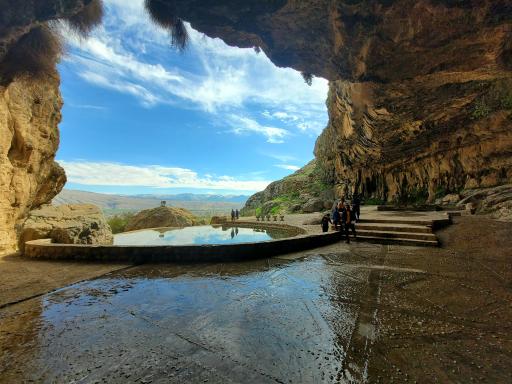
Solomon’s Cavern… A sanctuary for prayer during the Elamite era.
Caves are among the most majestic and breathtaking creations of nature, resulting from thousands, if not millions, of years of earthly evolution. The unique biodiversity they shelter, such as isolated chains of living beings, distinct ecosystems, and the variety of insects and creatures they house, underscores their significance.
Solomon’s Cavern, located in the city of Masjid Solomon in Ahwaz, overlooks a valley to the south of Izeh and is dominated by a vast natural stone arch, remarkable in its beauty and magnitude.
Inside Solomon’s Cavern, there is a fresh water spring. During the rainy season, a powerful waterfall cascades from the top of the cliff. Four notable engravings from the Elamite era can be observed here.
Solomon’s Cavern was seen as a sacred site and a place for prayer during the Elamite period and for thousands of years after that. It is also referred to as the “Tarisha” sanctuary, derived from the name of an Elamite deity. Of the four rock carvings in this area, two are inside the cavern, and the other two are outside. All are attributed to one of the local Elamite kings named “Hani” (2700 B.C.) who ruled over Ayapir (the name for Izeh during the Elamite time).
Rock shelters from the ancient Stone Age are concentrated in the north and northwest regions of the Izeh plain, bordering wetlands.
In total, 147 caves and rock shelters were identified on the outskirts of the Izeh plain in northeast Khuzestan province, documented, mapped, and monitored through studies conducted in the 1980s.
The Izeh plain is among the most critical areas from the ancient Stone Age, offering a diversity of resources, hill slopes, plains, water sources, as well as limestone caves and shelters, providing refuge for the people of that era. These places offer insights into the reconstruction of lifestyles and population movements at the end of the ancient Stone Age.




